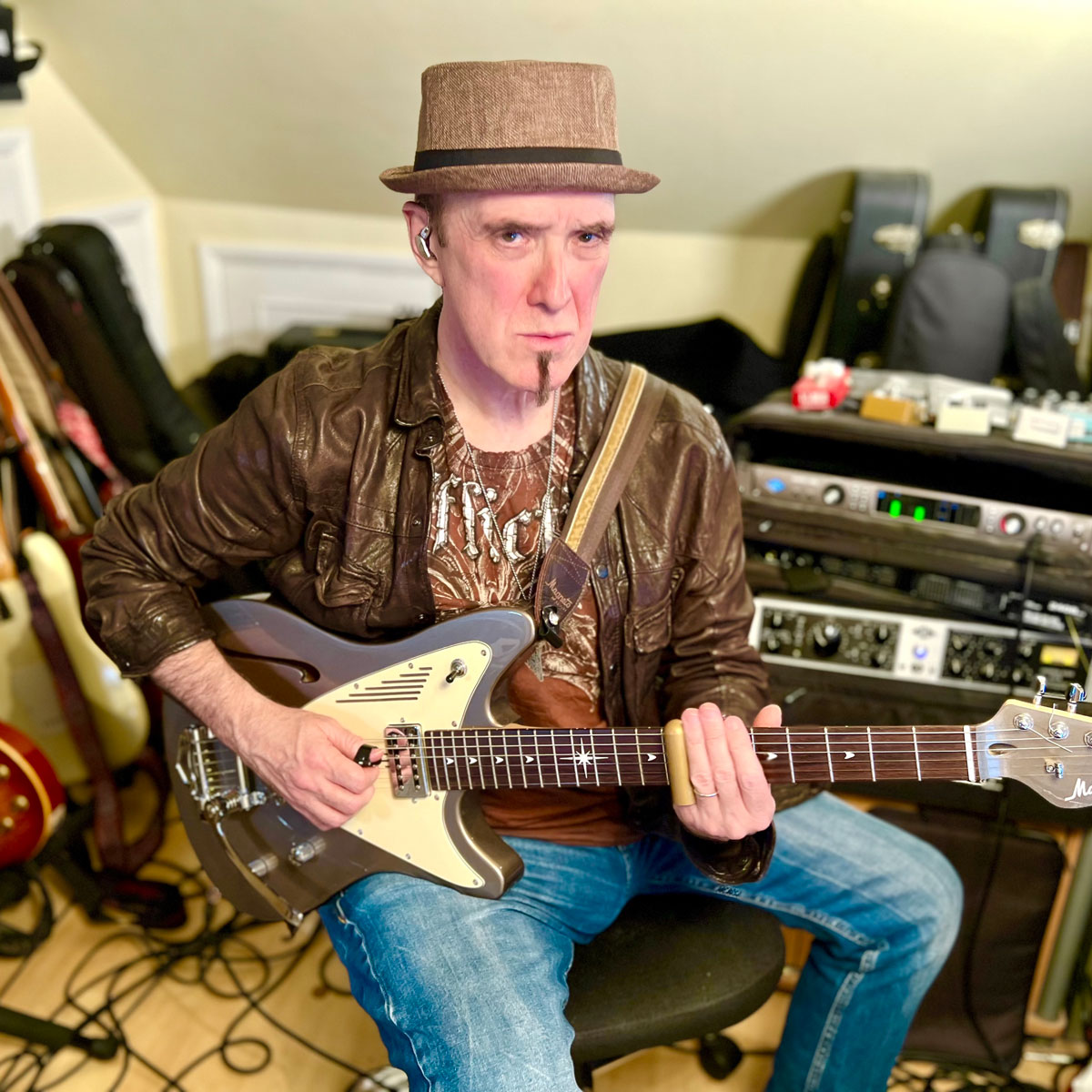Seven-note groupings can add some serious spice to your solos – just ask Steve Vai
Looking to add the unexpected to your improv? Septuplets might be the answer, challenging the audience and yourself

In this lesson, we’re going to examine the use of seven-note groupings. The seven-note group is different to most solo rhythms, as it can’t be evenly divided. There are a number of ways to groups the notes within the seven, but they are always uneven. Common subdivisions are 4+3 and 3+4.
Example 1 shows these subdivisions in both 7/4 and 7/8 time signatures – the only difference being the length of the basic unit of the pulse. Then we’ll look at a riffy melodic line over a last 7/4 groove. Within the 7/4 groove if we play eighth notes, there are many different ways to groups the notes – some of the bars of this line suggest a 3+4 beat grouping and others seem to want to reverse it - this is a common feature in both prog rock and fusion.
From that point, we’ll look at a soloist’s approach to using seven-note subdivisions of the beat over a 4/4 groove. Steve Vai was our inspiration for this approach. His free-wheeling improvisations often use these groupings.
Vai’s music is notoriously difficult to notate. In fact, a young Vai did a transcription book of Frank Zappa’s playing while he was playing with him, and few have been brave enough to follow in his footsteps. It’s highly likely that Zappa’s own unworldly improvisations were a considerable influence on Steve, rhythmically at least.
Vai’s playing is essentially rock-based, but there are other influences from jazz and classical styles, even Eastern European folk music. As a result, the rhythms that he gravitates towards are extremely varied.
While this lesson is not a tutorial on Vai’s style, I’ve explored a number of different uses of sevens that he also likes to employ.
It might help to verbalise the seven-note group, although obviously beyond a certain speed this will be impossible to say out loud.As with learning how triplets feel, it may take a little time to get to the point where you don’t need to count the groups of seven.
Learning this rhythm will add yet more variety to your improvised lines. Just as playing sextuplet fills in the gap between playing 16th and 32nd notes, so the groups of seven fill in the gap between sextuplets and 32nd notes.
The first line over a 4/4 groove is really an exercise to help you learn to feel the constant groups of seven. The next line is more of a challenge as it uses slides, hammer-ons and pull-offs in groups of seven. Starting each beat on the open third string (G) should help you land that note, on the beat.
Example 5 combines seven-note groups with more conventional rhythms. This humanises the relentless motion. Example 6 rounds off the lesson by bringing in some tapping, and shifts between D Dorian and the D blues scale, especially the chromatic movement between the A, Ab and G in the blues scale. Explore and enjoy!
Get the tone
Amp settings: Gain 8, Bass 6, Middle 4, Treble 4, Reverb 5
For this, you’ll need a classic modern rock tone. These more flowing lines will require a fair bit of drive. A splash of reverb is standard for this approach. If you use a delay pedal, try a classic tape echo type tone. A compressor pedal will help with the faster lines but is not essential. With these speedy lines be careful to avoid adding too much delay as this will obscure the note detail.
Example 1. Quarter notes in 7/4 and 7/8
Here are two of the most logical ways to group quarter notes in 7/4. Example 1b does the same but with half the note values in 7/8.
Example 2. Minor pentatonic fusion idea
Here’s a riff that uses A minor pentatonic for a fusion-ish Mahavishnu Orchestra type influence.
Example 3. Legato line
This one is a legato seven-notes-per-beat line which should help to internalise this subdivision. Focus on landing the first note of each group on the beat.
Example 4. Single-string tapping emulation
This one takes the constant motion idea but moves up and down the third string using slides, hammer-ons and pull-offs for a liquid sound similar to a tapping lick.
Example 5. Blending other rhythms
Now we start to blend in other rhythmic groupings to make a more realistic line, as relentless seven-note groupings can soon get tiresome.
Example 6. Adding the flat 5 for harmonic interest
Again, we’re blending more conventional rhythms but adding tapping for a fluid sound. More usage of the b5 from the blues scale provides chromatic interest.
Get The Pick Newsletter
All the latest guitar news, interviews, lessons, reviews, deals and more, direct to your inbox!
A professional guitarist for many years, Andy G Jones has played with Van Morrison, James Ingram, Lamont Dozier, Queen (Brian May and Roger Taylor), Robben Ford, Billy Cobham, John Illsley (Dire Straits), KT Tunstall, Albert Lee (featured on Andy's upcoming CD), Mike Finnigan, Dave Landreth and Ryan Voth from The Bros. Landreth, Malford Milligan, The BBC Radio Big Band, Patti Austin, Hamish Stuart (Average White Band), Lalo Schifrin (Hollywood film composer Bullitt, Mission Impossible), Hank Marvin, James Dean Bradfield (the Manic Street Preachers), Grady Tate, Agnetha from ABBA, Cliff Richard, Dudley Moore, Nathan James (Inglorious), Joey Tempest (Europe) and Kelsey Grammar.










